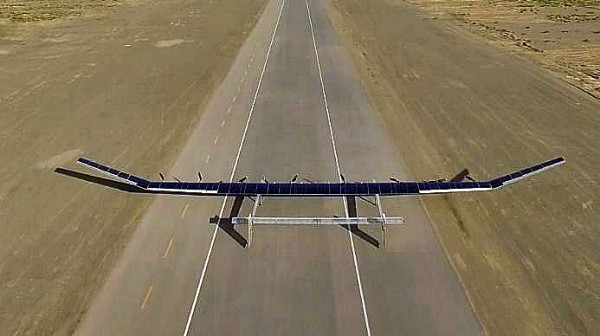China to Also Use CH-T4 Solar Drone as a ‘Quasi-Satellite’ and Wi-Fi Hub
| Arthur Dominic Villasanta | | Jun 14, 2017 10:40 AM EDT |
(Photo : Xinhua) CH-T4 solar drone taking-off.
The recent and once secret flight of Caihong-T4 (CH-T4) -- China's largest unmanned solar-powered drone -- to an altitude of 20,000 meters (20 km) took it into the region of the atmosphere called "near space" where it will serve in the future as a "quasi-satellite."
Near space is the region of Earth's atmosphere that lies between 20 km and 100 km (65,000 and 328,000 feet) above sea level. It includes the stratosphere, mesosphere and the lower thermosphere.
Like Us on Facebook
The feat attained by CH-T4, which remains unverified, led Chinese state-controlled media to dub the robot plane China's first "near space solar drone." State media said China is only the third country to master near space solar drone technology after the United States and the United Kingdom.
It also said CH-T4 will serve as a "quasi-satellite" in the future, and will supplant some functions of telecommunication satellites in providing data relay services.
The solar drone is also expected to be used as "an airborne mobile Wi-Fi hub" to provide convenient mobile telecommunication and Internet access for remote areas and islands, saving the huge construction and maintenance costs of traditional communication means.
The primary mission for the CH-T4, however, will be to gather military and other types of military-related information from around the world, said Chinese officials.
China Aerospace Science and Technology Corporation, which leads the project team that developed the drone, said CH-T4 flew smoothly in near space for over 15 hours under control, finishing its scheduled flight path before landing safely back in China.
CH-T4 is a twin fuselage; cranked wing unmanned aerial vehicle with twin vertical rudders. Its wingspan extends 40 meters but only weighs between 400 kg and 450 kg.
The solar drone owes its lightness to the use of carbon fiber and plastic components. The use of these materials also means the UAV's eight electric propellers can drive the aircraft to speeds approaching 200 km/h.
Solar drones like the CH-T4 can perform well in near space and it's expected that the aircraft might be able to fly continuously for months or even longer in the future, said Li Guangjia, project director.
He said the project team had to overcome challenges in key technological fields such as aerodynamics, flight control and the efficient use of energy during the development of CH-T4.
TagsCaihong-T4 (CH-T4), solar-powered drone, china, quasi satellite, near space, China Aerospace Science and Technology Corporation
©2015 Chinatopix All rights reserved. Do not reproduce without permission
EDITOR'S PICKS
-

Did the Trump administration just announce plans for a trade war with ‘hostile’ China and Russia?
-

US Senate passes Taiwan travel bill slammed by China
-

As Yan Sihong’s family grieves, here are other Chinese students who went missing abroad. Some have never been found
-

Beijing blasts Western critics who ‘smear China’ with the term sharp power
-

China Envoy Seeks to Defuse Tensions With U.S. as a Trade War Brews
-

Singapore's Deputy PM Provides Bitcoin Vote of Confidence Amid China's Blanket Bans
-

China warns investors over risks in overseas virtual currency trading
-

Chinese government most trustworthy: survey
-

Kashima Antlers On Course For Back-To-Back Titles
MOST POPULAR
LATEST NEWS
Zhou Yongkang: China's Former Security Chief Sentenced to Life in Prison

China's former Chief of the Ministry of Public Security, Zhou Yongkang, has been given a life sentence after he was found guilty of abusing his office, bribery and deliberately ... Full Article
TRENDING STORY

China Pork Prices Expected to Stabilize As The Supplies Recover

Elephone P9000 Smartphone is now on Sale on Amazon India

There's a Big Chance Cliffhangers Won't Still Be Resolved When Grey's Anatomy Season 13 Returns

Supreme Court Ruled on Samsung vs Apple Dispute for Patent Infringement

Microsoft Surface Pro 5 Rumors and Release Date: What is the Latest?












